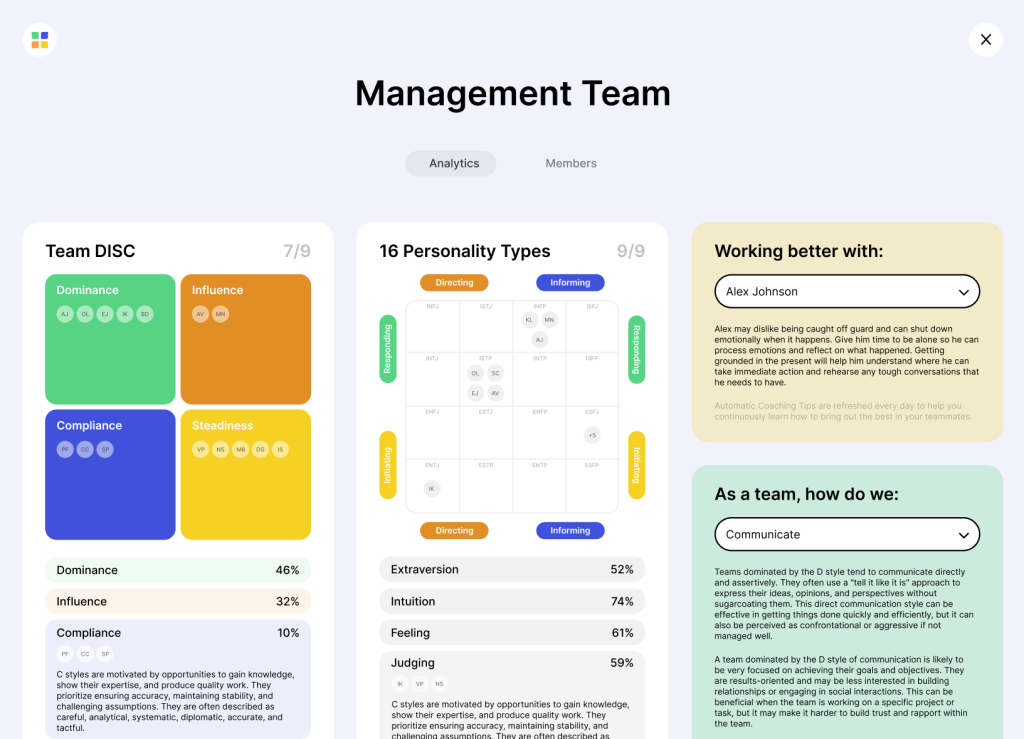Post Traumatic Stress Disorder (PTSD) was believed to affect only military personnel and veterans. But, we now understand that this condition may affect anybody, especially those who have experienced a traumatic or life-threatening incident.
PTSD differs from acute stress disorder. PTSD symptoms are longer-term and will interfere with a person’s everyday routine.
Approximately 7.7 million Americans experienced or are suffering from PTSD. And another 8% may suffer from the disorder at some point. Symptoms tend to occur immediately after the incident or years later. PTSD is a complex disorder with various causes and outcomes.
We will discuss the five different types of PTSD and their possible causes. You will also learn about the various symptoms of a person with PTSD and the treatments available to overcome them.
What is Post-Traumatic Stress Disorder (PTSD)? Meaning & Definition
PTSD is a severe disorder that occurs when a person has suffered or witnessed a distressing or frightening incident involving substantial bodily damage or threat. It was previously known as shell shock or battle fatigue syndrome.
PTSD is a long-term effect of traumatic experiences that evoke acute fear or helplessness.
Most individuals who experience a traumatic incident experience shock, anger, fear, and guilt. These negative feelings may seem ordinary. And most of us can overcome them easily.
However, this is not the case for a person who has PTSD. These emotions tend to persist and may even worsen. It can become so intense that they prevent the individual from continuing their daily routine normally.
Types Of Post-Traumatic Stress Disorder (PTSD)
Normal Stress Response
The normal stress response occurs before the onset of PTSD. However, it does not necessarily progress to full-blown disorder. Accidents, injuries, diseases, and other forms of excessive stress may trigger this response.
The normal stress response can be treated effectively with the help of loved ones, family, or group therapy sessions. Individuals suffering from a normal stress response typically recover in a couple of weeks.
Acute Stress Disorder
Acute stress disorder is not similar to PTSD. It may develop in individuals who experienced what is or what feels like a potentially life-threatening situation. The threat of death and the loss of loved ones or careers are among the factors that can induce acute stress disorder.
If this disorder is left untreated, it could escalate to PTSD. Individual and group therapy, medication, and specialized therapies prescribed by a psychiatrist can be used to treat acute stress disorder.
Uncomplicated PTSD
Uncomplicated PTSD is associated with a single significant traumatic incident rather than several episodes of such incidents. It is the easiest type of PTSD to treat.
Nightmares, flashes of memories of the incident, anger, and mood changes are all symptoms of uncomplicated PTSD. Uncomplicated PTSD is easily treatable with counseling, medication, or a combination of both.
Complex PTSD
Complex PTSD is the flipside of uncomplicated PTSD. It is caused by a combination of traumatic incidents, not just one. Abuse, continuous exposure to war or violence, or unexpected loss are the typical causes of complex PTSD. Complex PTSD treatment is slightly more intensive than uncomplicated PTSD.
Individuals with complex PTSD may also suffer from borderline or antisocial personality disorder or dissociative disorders. They tend to display behavioral problems, including impulsivity, violence, or drug addiction. They may also demonstrate intense emotional issues such as outrage, depression, or agitation.
Comorbid PTSD
Comorbid PTSD is a phrase used for co-occurring conditions. It is used when an individual suffers from several mental health issues and substance misuse issues. Comorbid PTSD is quite common, as most people suffer from more than one disorder.
Creating a treatment plan that treats the mental health issues and comorbid PTSD together produces the best results. But, turning to self-medication, such as using drugs or alcohol to relieve pain, can make matters worse and extend the treatment.
Post-Traumatic Stress Disorder (PTSD) Symptoms
Post-traumatic stress disorder symptoms might occur within one month of a traumatic experience. But the symptoms may also emerge years after that too. These symptoms pose significant challenges in social or professional settings and in relationships. They can also impair your ability to carry out your daily routine.
PTSD symptoms may change over time or from one person to another. The severity of PTSD symptoms also varies from person to person. For example, you may experience more symptoms when stressed or reminded of what happened.
PTSD symptoms are frequently categorized into four major groups: intrusive memories, avoidance, negative changes in thinking and mood, and changes in physical and emotional reactions.
Symptoms for each of the four categories are as follows:
Intrusive memories
- Recurrent and unsettling recollections of the traumatic incident
- Reliving the tragedy through thoughts and memories of the traumatic incident
- Upsetting flashbacks, hallucinations, or nightmares involving the traumatic incident
- Severe emotional discomfort or bodily reactions to something resembling the traumatic incident
Avoiding
- Avoid people or places that may trigger recollections of the traumatic incident
- Emotional detachment and isolation from people around them
- Lack of interest in hobbies or activities that they enjoyed previously
- Attempt to avoid thinking about or discussing the traumatic incident
Increased arousal
- Experience physical symptoms include increased blood pressure and heart rate, hyperventilation, body tension, nausea, and diarrhea
- Get startled or terrified easily
- Always on the lookout for danger
- Insomnia or having difficulty sleeping
- Lack of concentration
- Anger outbursts, irritability, and aggressive behavior
- Overwhelming feelings of remorse or shame
Negative cognitions and mood
- Feel hopeless and uncertain about the future
- Memory issues, such as forgetting crucial information about the traumatic incident
- Difficult in sustaining relationships with others.
- Disconnection from loved ones, family, and friends
- Feeling emotionally numb.
List of Most Common Causes Of PTSD
Everyone responds differently to stressful circumstances. Everyone has their preference and capacity to handle anxiety, stress, and the dangers of a traumatic incident. Because of that, not everyone who experiences a traumatic incident develops PTSD.
In addition, the kind of support an individual receives from the people around them after a traumatic incident may influence the development of PTSD.
People who were mistreated as children or who were repeatedly exposed to potentially dangerous situations are at risk of experiencing PTSD. Victims of physical and sexual abuse have a higher chance of developing PTSD.
Below is a list of the most common causes of PTSD:
- Stressful situations, including the frequency and intensity of trauma you experienced in your life
- Hereditary mental health concerns, such as a family history of anxiety and depression
- Personality traits inherited from your parents — also known as temperament
- History of alcohol or drug misuse
- The way your brain reacts to stress by controlling the chemicals and hormones your body produces
Can Post-Traumatic Stress Disorder (PTSD) Be Dangerous, And What Are Risk Factors?
Post-traumatic stress disorder can affect your entire life, including your career, relationships, health, and enjoyment of daily activities. PTSD may also raise your chances of developing other mental health issues.
Additionally, PTSD may cause acts of violence, anger, and disputes. And these issues only worsen when drugs or alcohol are present. The effects of PTSD may cause someone to put themselves or others in danger, including their family members.
Untreated PTSD can cause lasting brain damage because of the individual’s hyper-aroused state. Individuals suffering from untreated PTSD lack control over their thoughts and behaviors.
Below are some risk factors that may increase your risk of developing PTSD following a stressful incident, such as:
- Experiencing severe or long-term trauma
- Having experienced trauma when you were younger, such as child abuse
- Working in a career that exposes you to traumatic incidents, such as military, soldiers, and first responders
- Having additional mental health issues, such as anxiety, dissociative disorders, or paranoia
- A lack of a strong circle of family and friends
- Having troubles with substance abuse, such as compulsive drinking or drug usage
How To Prevent & Overcome Post-Traumatic Stress Disorder (PTSD)?
It is critical to understand that not everybody suffering from trauma has PTSD. And not everybody with PTSD needs to undergo psychiatric therapy. For some, the PTSD symptoms may fade or diminish over time.
Others may improve with a strong network of support around them. However, most individuals may require professional treatment to help them cope with the severe psychological discomfort and symptoms of PTSD. It is essential to know that trauma can create significant distress if left untreated. And it is not the person’s fault that they are distressed.
You can treat PTSD with medication and therapy. So, the sooner a person seeks treatment, the higher their chances of recovery. Some people who display stress-related symptoms may get confused if they are experiencing PTSD or normal stress. With the free PTSD test, you can get firsthand insights into your situation.
It may help you to see whether you are experiencing any signs or symptoms of PTSD. The test result also allows you to determine if you should visit a mental health practitioner. When you visit a doctor with suspected PTSD, the doctor will first evaluate your condition with a thorough medical history and physical exam.
If there’s no physical illness, the doctor will recommend you to a psychiatrist or psychologist specializing in diagnosing and treating mental health disorders. Psychiatrists and psychologists use professionally developed interview and evaluation methods to assess if a person has PTSD or other mental health disorders.
Individuals are diagnosed with PTSD if they experience PTSD symptoms for longer than one month. Psychiatrists and other mental health practitioners help individuals recover from PTSD using a variety of effective evidence-based treatments. These treatments may include psychotherapy, medication, or both.
Post-Traumatic Stress Disorder (PTSD) FAQs
What is a Post Traumatic Stress Disorder condition?
PTSD is a severe disorder that occurs when a person has suffered or witnessed a distressing or frightening incident involving substantial bodily damage or threat. It was previously known as shell shock or battle fatigue syndrome. PTSD is a long-term effect of traumatic experiences that evoke acute fear or helplessness.
PTSD is a severe disorder that can happen to those who have experienced a traumatic or life-threatening incident. Most individuals who experience a traumatic incident experience shock, anger, fear, and guilt. These negative feelings may seem ordinary but may not be the case for a person with PTSD. These emotions tend to persist and may even worsen. It can become so intense that they prevent the individual from continuing their daily routine normally.
Unfortunately, PTSD does not go away. Evidence-based treatment can control the symptoms and allow them to remain dormant for years. But the trauma that causes the symptoms will never go away. Most people with PTSD will gradually improve, but many may continue to experience the negative effect of it. With that being said, living and flourishing with PTSD is absolutely possible.


